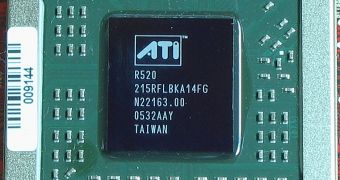Jerome Glisse, member of the R500 team, has just announced the availability of the first open-source Xorg driver for the ATI Radeon X1000 "R500" series. The driver is still a bit primitive and lacks proper initialization and setup of the video modes for the r520 and r580 series (X1800 and higher and even some X1600). However, this is its first release and the developers' team who have worked on it expect others to get involved too and improve it.
The reverse engineering of the r500-based AMD video cards implied a lot of work and numerous testings and the developers did not get any support or help from AMD. One of the major features that are to be brought to this driver is the randr 1.2 support. The future releases of this open source R500 aim at some ambitious features and additions. The current roadmap takes in tasks such as RandR. 1.2 support with dumb memory allocator, more sophisticated 3D acceleration due to the fact that Xorg provides infrastructure for a good usage of the 3D drivers or 3D reverse engineering. The 2D acceleration will be therefore simplified. There's also a TTM DRM driver for proper memory management on the list and port the driver to new DRM modesetting work.
Works on R500 have been, and still are, slowed down by the fact that AMD, unlike other hardware manufacturers such as XGI or Intel, does not provide specifications on their hardware to the open source community.
The Radeon X1000 series, which was introduced back in October 2005, stands on ATI's R520 core (codename Fudo). This May, ATI has released the R600 successor to the R500 series. ATI R520 was designed as a large general purpose register array that is capable of multiple concurrent reads and writes and it is equipped with a high-bandwidth connection to each shader array. This provides temporary storage necessary to keep the pipelines fed by having work available as much as possible.

 14 DAY TRIAL //
14 DAY TRIAL //